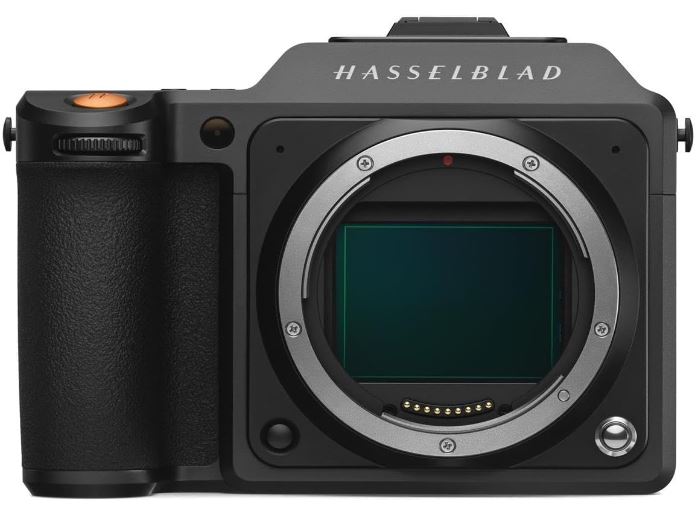Medium format cameras are known for their exceptional image quality and versatility. But what makes them stand out in specific scenarios?
In this article, we’ll explore where these cameras truly excel. Whether you’re shooting detailed landscapes, high-end fashion, or complex architectural structures, medium format cameras offer unique advantages that other camera formats can’t match.
Discover the specific use cases that justify investing in these powerful tools.
Keep reading More: Depth of field medium format experimentation
1. What are the advantages of using a medium format camera for landscape photography?
| Image | Product | Price |
|
Our Pick
1

|
Hassel X1D |
|
|
2

|
Fujifilm GFX |
|
|
3

|
Pentax 6457 |

Medium format cameras offer superior resolution and dynamic range, making them ideal for capturing vast landscapes. The larger sensor size allows for greater detail and better color depth, giving landscape photos a lifelike quality. This is particularly beneficial for professional photographers who require high-quality prints or need to capture intricate details in wide scenes.
2. How do medium format cameras perform in fashion photography?
Fashion photography demands sharpness and detail, especially when showcasing intricate designs and textures. Medium format cameras excel in this area due to their high resolution, which ensures every fabric and accessory is captured with precision.
The cameras also produce images with a shallow depth of field, making subjects stand out against blurred backgrounds, adding a professional touch to fashion shoots.
3. Are medium format cameras ideal for architectural photography?
Architectural photography requires capturing buildings and interiors with precision. Medium format cameras, with their large sensors and high resolution, are perfect for this. They minimize distortion, ensuring straight lines remain straight and details are crisp.
The dynamic range also helps in managing the contrasts between shadows and highlights, which is crucial in architectural shots.
4. Why do some photographers prefer medium format for portrait photography?
Medium format cameras are favored for portrait photography because of their ability to capture stunning detail and natural skin tones. The large sensors create a beautiful bokeh effect, isolating the subject from the background.
This makes portraits look more professional and visually appealing, with a three-dimensional quality that is hard to achieve with smaller sensor cameras.
5. What makes medium format cameras better for capturing fine art?
Fine art photography requires the highest possible image quality to preserve the artist’s vision. Medium format cameras deliver unparalleled detail, color accuracy, and dynamic range, making them ideal for this genre.
They allow photographers to create large prints without losing quality, which is essential for gallery exhibitions and high-end art publications.
6. How do medium format cameras excel in commercial photography?
In commercial photography, image quality is paramount, as the photos often represent a brand’s image. Medium format cameras provide the resolution and clarity needed for high-end commercial shoots, such as advertisements and product catalogs.
Their ability to capture minute details ensures that products are presented in the best possible light, enhancing the overall brand perception.
7. Are medium format cameras suitable for product photography?
Product photography benefits from the high resolution and detail that medium format cameras offer. When photographing products, especially for e-commerce or advertising, every detail counts. Medium format cameras capture textures, colors, and small features with precision, ensuring that the product images are not only clear but also appealing to potential customers.
8. Can medium format cameras handle low-light situations effectively?
Medium format cameras generally have larger pixels, which means they can capture more light, making them effective in low-light conditions. Their ability to maintain detail and reduce noise in dark scenes makes them a great choice for night photography, indoor shoots, or any situation where lighting is challenging.
9. How does the dynamic range of medium format cameras benefit photographers?
The dynamic range in medium format cameras allows photographers to capture a wider range of tones, from the darkest shadows to the brightest highlights. This is particularly beneficial in high-contrast scenes where maintaining detail in both the highlights and shadows is crucial. This feature enhances the overall quality of the image, providing a more realistic and balanced final product.
10. What are the limitations of using medium format cameras in wildlife photography?
While medium format cameras excel in many areas, they may not be the best choice for wildlife photography. These cameras are generally bulkier and slower in operation, which can be a disadvantage when capturing fast-moving animals. Additionally, the long focal lengths typically required for wildlife photography are less common in medium format systems, making them less versatile for this genre.
FAQs
1. What is the main difference between medium format and full-frame cameras?
Medium format cameras have larger sensors than full-frame cameras, which provides better image quality, higher resolution, and greater dynamic range.
2. Is a medium format camera worth the investment for a hobbyist?
For most hobbyists, a medium format camera may be overkill due to its high cost and specialized use cases. However, if image quality is a top priority and the budget allows, it can be a worthwhile investment.
3. Can medium format cameras be used for video production?
While some medium format cameras can shoot video, they are generally not the best option due to their slower operation and bulkier size compared to cameras designed specifically for video.
Conclusion
Medium format cameras are powerful tools that excel in specific use cases like landscape, fashion, and commercial photography. Their superior resolution, dynamic range, and ability to capture intricate details make them the go-to choice for professionals in these fields. While they may not be the best fit for every genre, their advantages in certain scenarios justify the investment for photographers seeking the highest image quality.

